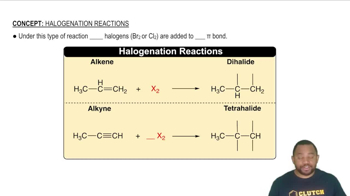Here are the essential concepts you must grasp in order to answer the question correctly.
Periodic Trends
Periodic trends refer to the patterns observed in the properties of elements as you move across or down the periodic table. Elements in the same group (column) often exhibit similar chemical properties due to their similar valence electron configurations. Understanding these trends helps predict the behavior of elements based on their position in the periodic table.
Recommended video:
Electronic Configuration
Electronic configuration describes the distribution of electrons in an atom's orbitals. It is crucial for determining an element's chemical properties, as the arrangement of electrons, particularly in the outermost shell, influences how an element interacts with others. For elements with atomic numbers 35 (Bromine) and 53 (Iodine), their configurations indicate they belong to the halogen group, which is characterized by similar reactivity.
Recommended video:
Electron Configuration Example
Halogens
Halogens are a group of elements in Group 17 of the periodic table, known for their high reactivity and tendency to form salts with metals. The halogens include fluorine, chlorine, bromine, iodine, and astatine. Elements in this group share similar chemical properties due to their similar electronic configurations, particularly having seven valence electrons, which drives their reactivity and bonding behavior.
Recommended video:




